Results
-
 £106.99
£106.99Mandalen Landscapes (Concert Band - Score and Parts) - Sparke, Philip
The picturesque town of Mandalen lies amid snow-covered mountains and scenic fjords on the west coast of Norway. Mndalen Landscapes was commissioned by and written for Mndalen Skule og Ungdomskorps (Mandalen School and Youth Band) for a major concert in November 2003 at the instigation of its conductor, John Hudson, a long-time friend of composer Philip Sparke. Sparke set out to capture the beauty of the area in music and the piece opens with an evocation of the crisp, clear air of a Norwegian morning. After this introduction, the main theme is stated on clarinets and saxophones. A central bridge section takes the listener through several moods until the brass reintroduce the main theme under a woodwind descant. Material from the introduction brings the work to a peaceful close.Duration: 6:00
Estimated dispatch 7-14 working days
-
 £69.99
£69.99Westminster Prelude (Concert Band - Score and Parts) - Sparke, Philip
London is famous for its history and pageantry. No part of the city epitomises this better than the area known as Westminster. It is home to The Houses of Parliament and Big Ben, Westminster Abbey, Westminster Bridge and numerous other historical sites. It also hosts many annual parliamentary ceremonies that characterise London life. Westminster Prelude aims to capture the mood of life in this famous part of London, both the majesty of its history and the pomp of its ceremonies.Duration: 2:30
Estimated dispatch 7-14 working days
-
 £84.99
£84.99Remember Mozart (Concert Band - Score and Parts) - Gistel, Luc
In combining his gifts as a composer with his great creative spark, Andre Waignein composed Remember Mozart, a delicate and flowing work dedicated to one of the greatest composers in music history, Wolfgang Amadeus Mozart. Remember Mozart develops a single but serene melodic line, only interrupted by some measures in the central passage. The primary theme soon returns, proceeding with a natural flow, and leads the work to a modulatory section - a bridge passage to the Mozartian-flavoured finale, brilliantly highlighted by a composer filled with admiration for the genius of Salzburg.Duration: 3:45
Estimated dispatch 7-14 working days
-
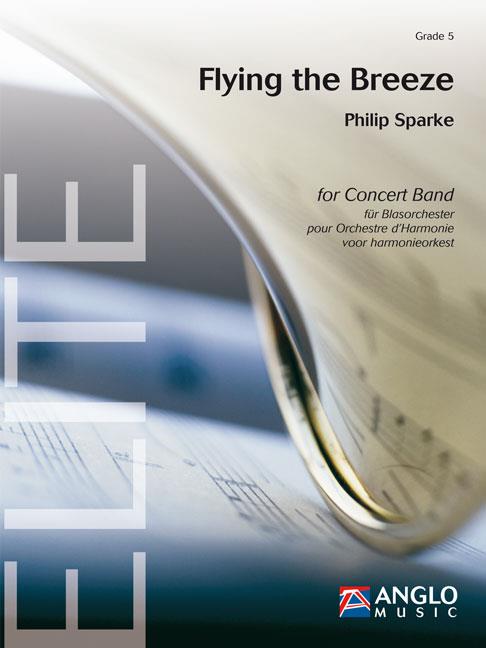 £137.99
£137.99Flying the Breeze (Concert Band - Score and Parts) - Sparke, Philip
The Breeze Brass Band, based in Osaka, Japan, is a professional ensemble, which was founded in 1990 to encourage the growth of brass bands there. They have invited many leading British conductors, composers and soloists to share their expertise and without doubt have been responsible, through concerts and recordings, for a huge increase in interest in brass bands in their country.In November 2000 they reached their 10th anniversary and commissioned Philip Sparke, a frequent visitor, to write a piece to celebrate the occasion. Flying the Breeze was the result and the composer made the concert band transcription in 2004.The piece opens with three repeated notes (in the brass band version these were written Bs - BBB being the band's initials) and a short introduction leads to a robust theme from the clarinets, horns and trombones, which is then taken up by trumpets. A restless bridge passage leads to a syncopated tune from the alto saxophone and then to a third theme from a solo euphonium. A graceful second subject, initially on a solo clarinet, leads back to a recall of the introductory material before a full-scale recapitulation. An intense allargando leads to a full-band version of the second subject under a running woodwind passage, which leads to a short coda.Duration: 6:00
Estimated dispatch 7-14 working days
-
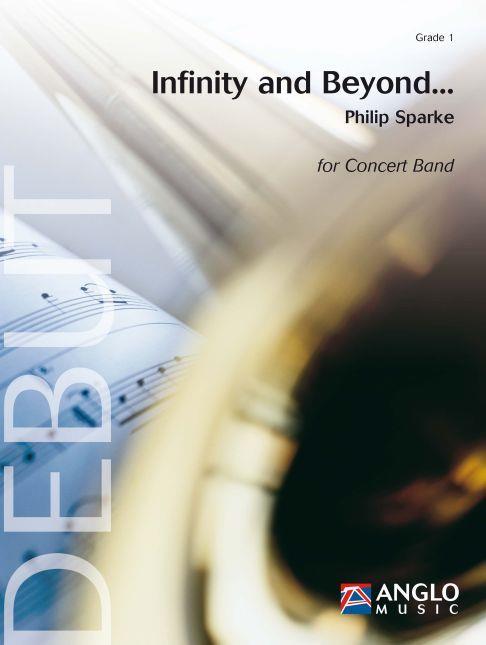 £69.99
£69.99Infinity and Beyond... (Concert Band - Score and Parts) - Sparke, Philip
The last decades of the 20th century saw man's first steps in space exploration. Since the first moon landing by Neil Armstrong in 1969, these adventures in outer space have captured the public's imagination and have given birth to scores of science fiction movies, books and TV series that have tackled the subject. Infinity and Beyond... takes as its inspiration the wonderful film scores of composers such as John Williams and Jerry Goldsmith, who have almost invented a style which could be called 'space music'.Opening with a rhythmic bass figure, Infinity and Beyond... begins with a robust introduction in 3/4, which leads to the main theme in 4/4, played by the full band. A short bridge passage, utilising the interval of a fourth, leads to a modal central section, featuring first the trumpets and then played by the whole band; this in turn leads back to a repeat of the introduction until the main theme returns to bring the piece to a close.Duration: 3:00
Estimated dispatch 7-14 working days
-
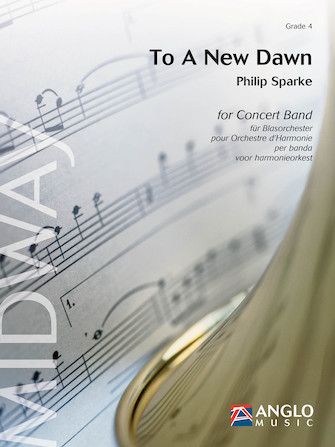 £152.99
£152.99To A New Dawn (Concert Band - Score and Parts) - Sparke, Philip
To A New Dawn was commissioned by the United States Continental Army Band - Captain Timothy J. Holtan, Commander and Conductor.The brief was for a piece to celebrate the 3rd Millennium and it was the composer's aim to provide a work which, as well as looking forward to the challenges of the new century, also contained moments of reflection about the last one.After a bright introduction featuring the trumpets a perky theme, passing quickly through several keys, appears on the woodwinds. A solo trumpet takes up a new theme over bubbling quavers (eighth notes) and this leads to a rhythmic figure on low clarinets, followed by the upper woodwinds. A brass interlude follows and, after a short bridge passage, an oboe takes up a contrasting legato tune that builds to a climax.An andante section follows with solos for horn and flugel horn (or trumpet) and a florid flute cadenza. A passionate climax leads back to the faster music and, eventually, to a full recapitulation, revisiting the earlier material before a lively coda close the work as it began.Duration: 9:40
Estimated dispatch 7-14 working days
-
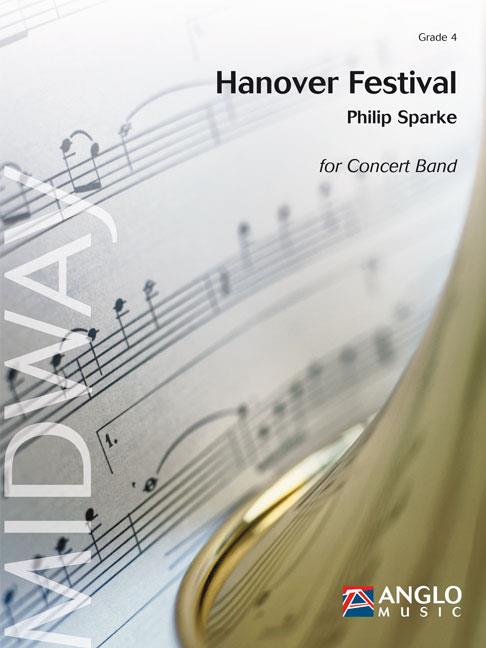 £137.99
£137.99Hanover Festival (Concert Band - Score and Parts) - Sparke, Philip
The Hanover Wind Symphony, New Jersey, USA was founded in 1984 by its conductor Peter Boor. He commissioned Hanover Festival to celebrate the band's 15th Birthday and the first performance took place on October 27th 1999. The piece starts with a solemn brass fanfare. Woodwinds join in and the music subsides into an expressive chorale. A climax is reached and the fanfare returns. Trumpets introduce an explosive vivo section, characterised by an energetic theme from the horns and low clarinets. A bridge passage with strong brass chords leads to a playful section that introduces a legato central theme under woodwind figures. This is taken up by the full band, the playful music returns and the original horn tune is reintroduced. Finally the opening fanfare returns, this time accompanied by music from the vivo section, until a fast and furious coda closes the work.Duration: 8:20
Estimated dispatch 7-14 working days
-
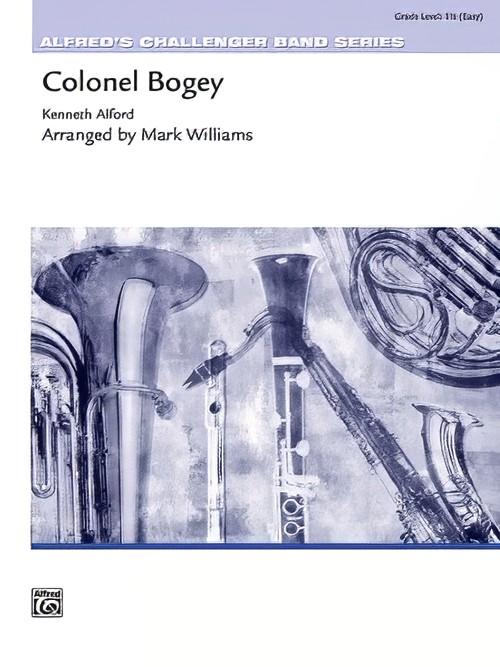 £49.95
£49.95Colonel Bogey (Concert Band - Score and Parts) - Alford, Kenneth J. - Williams, Mark
Everyone is going to want to whistle along with this well-known march made famous from its use in the film Bridge over the River Kwai. This easy-to-play arrangement begins with a single snare drum, 2-part flutes and an optional whistling part but quickly opens up into a full treatment of this great march. Highly recommended. Duration: 2.40
Estimated dispatch 7-14 working days
-
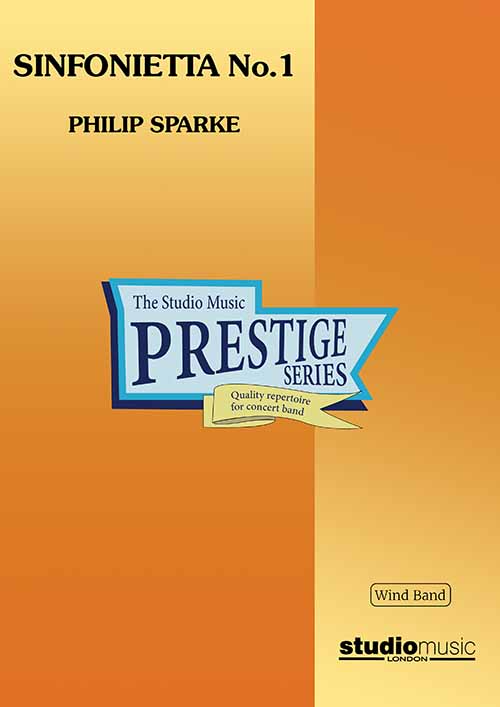 £137.95
£137.95Sinfonietta No.1 (Concert Band - Score and Parts) - Sparke, Philip
Sinfonietta No.1 was commissioned by the Foundation of Friends of the Marine Band of the Royal Netherlands Navy. It was first performed by them in 'De Doelen', Rotterdam on the 13th November 1990 (in a joint concert with the Royal Marines Band from Great Britain) which celebrated the 325th anniversary of the Netherlands Marine Corps and coincided with the 45th anniversary of the band and the 175th anniversary of naval music in the Netherlands.The work is in three, linked movements:I: OvertureSeveral contrasting motivic ideas open the work, but none manage to develop into a theme of any sort. Eventually a short theme appears on clarinet, alto saxophone and horn but it is swept away by runs of triplets from the woodwinds. The theme returns, accompanied by the triplets from the woodwinds. The theme returns, accompanied by the triplets, and this leads to a return of the opening material to close the movement.II: AriaThe second movement opens with violent outbursts from the timpani until a simple, mournful tune is presented by flute and bassoon over a sparse accompaniment by the lower brass. Trumpets introduce a quicker, turbulent central section but this leads back to a brief repeat of the original tune, bringing the movement to a peaceful close.III. ScherzoThe final movement is a fast and furious scherzo which bursts into life with a flurry of notes. The vivacious main (woodwind) theme is first played by the flutes and then by the whole woodwind section. A cornet then takes centre stage with a fanfare-like theme which is then taken up by the brass. A bridge passage then leads to a version of this theme for full band. The original flute tune is then developed until the horns introduce a chorale tune which is taken up by saxes and then full band until the opening material reappears. The woodwind and brass themes are then combined and lead to a forceful version of the chorale which becomes more and more dissonant until the opening of the Overture returns to bring the work to a rousing finish.Recorded on QPRM134D THE KINGS GO FORTH, Central Band of the Royal Air Force
Estimated dispatch 7-14 working days
-
 £27.95
£27.95Sinfonietta No.1 (Concert Band - Score only) - Sparke, Philip
Sinfonietta No.1 was commissioned by the Foundation of Friends of the Marine Band of the Royal Netherlands Navy. It was first performed by them in 'De Doelen', Rotterdam on the 13th November 1990 (in a joint concert with the Royal Marines Band from Great Britain) which celebrated the 325th anniversary of the Netherlands Marine Corps and coincided with the 45th anniversary of the band and the 175th anniversary of naval music in the Netherlands.The work is in three, linked movements:I: OvertureSeveral contrasting motivic ideas open the work, but none manage to develop into a theme of any sort. Eventually a short theme appears on clarinet, alto saxophone and horn but it is swept away by runs of triplets from the woodwinds. The theme returns, accompanied by the triplets from the woodwinds. The theme returns, accompanied by the triplets, and this leads to a return of the opening material to close the movement.II: AriaThe second movement opens with violent outbursts from the timpani until a simple, mournful tune is presented by flute and bassoon over a sparse accompaniment by the lower brass. Trumpets introduce a quicker, turbulent central section but this leads back to a brief repeat of the original tune, bringing the movement to a peaceful close.III. ScherzoThe final movement is a fast and furious scherzo which bursts into life with a flurry of notes. The vivacious main (woodwind) theme is first played by the flutes and then by the whole woodwind section. A cornet then takes centre stage with a fanfare-like theme which is then taken up by the brass. A bridge passage then leads to a version of this theme for full band. The original flute tune is then developed until the horns introduce a chorale tune which is taken up by saxes and then full band until the opening material reappears. The woodwind and brass themes are then combined and lead to a forceful version of the chorale which becomes more and more dissonant until the opening of the Overture returns to bring the work to a rousing finish.Recorded on QPRM134D THE KINGS GO FORTH, Central Band of the Royal Air Force
Estimated dispatch 7-14 working days
